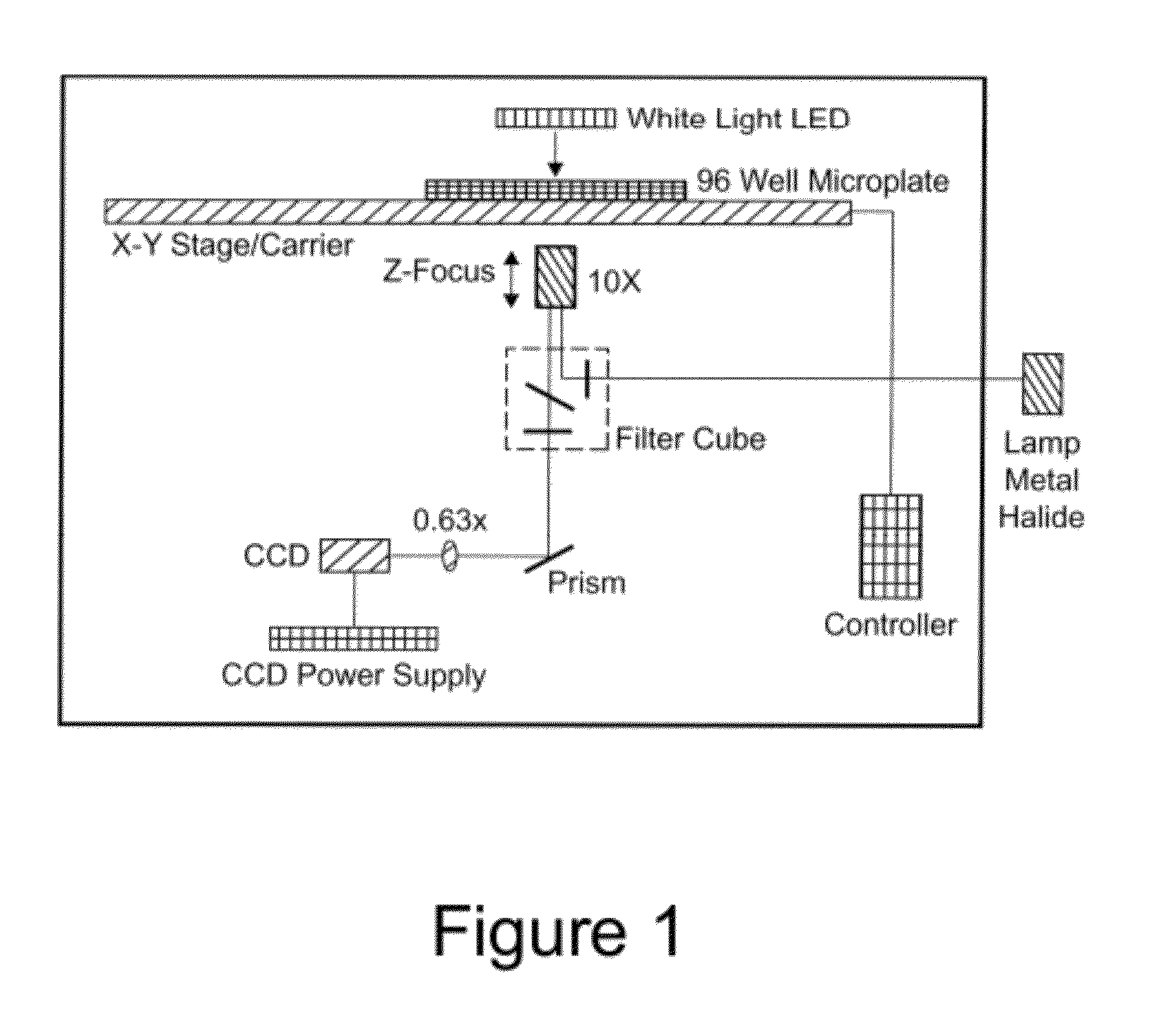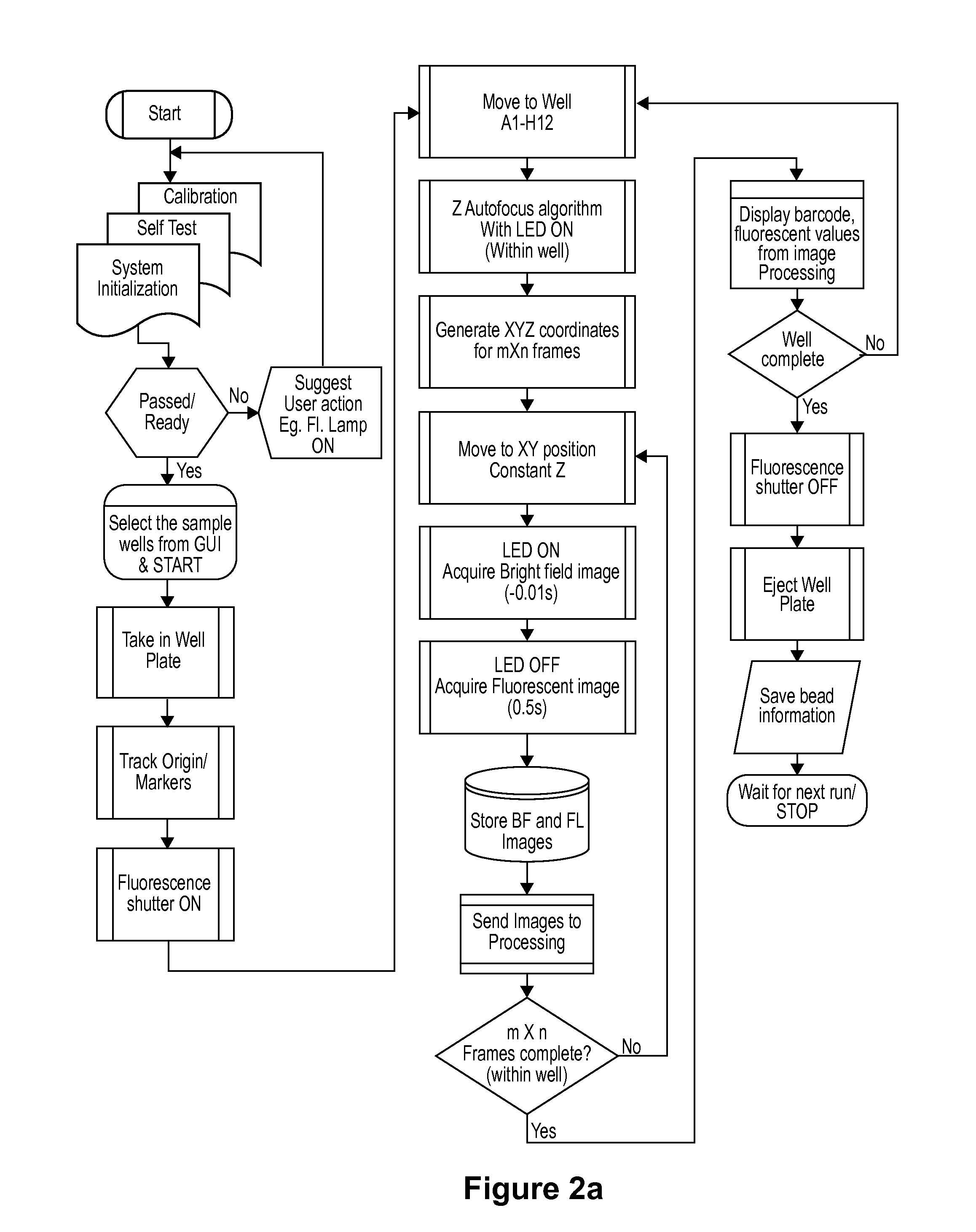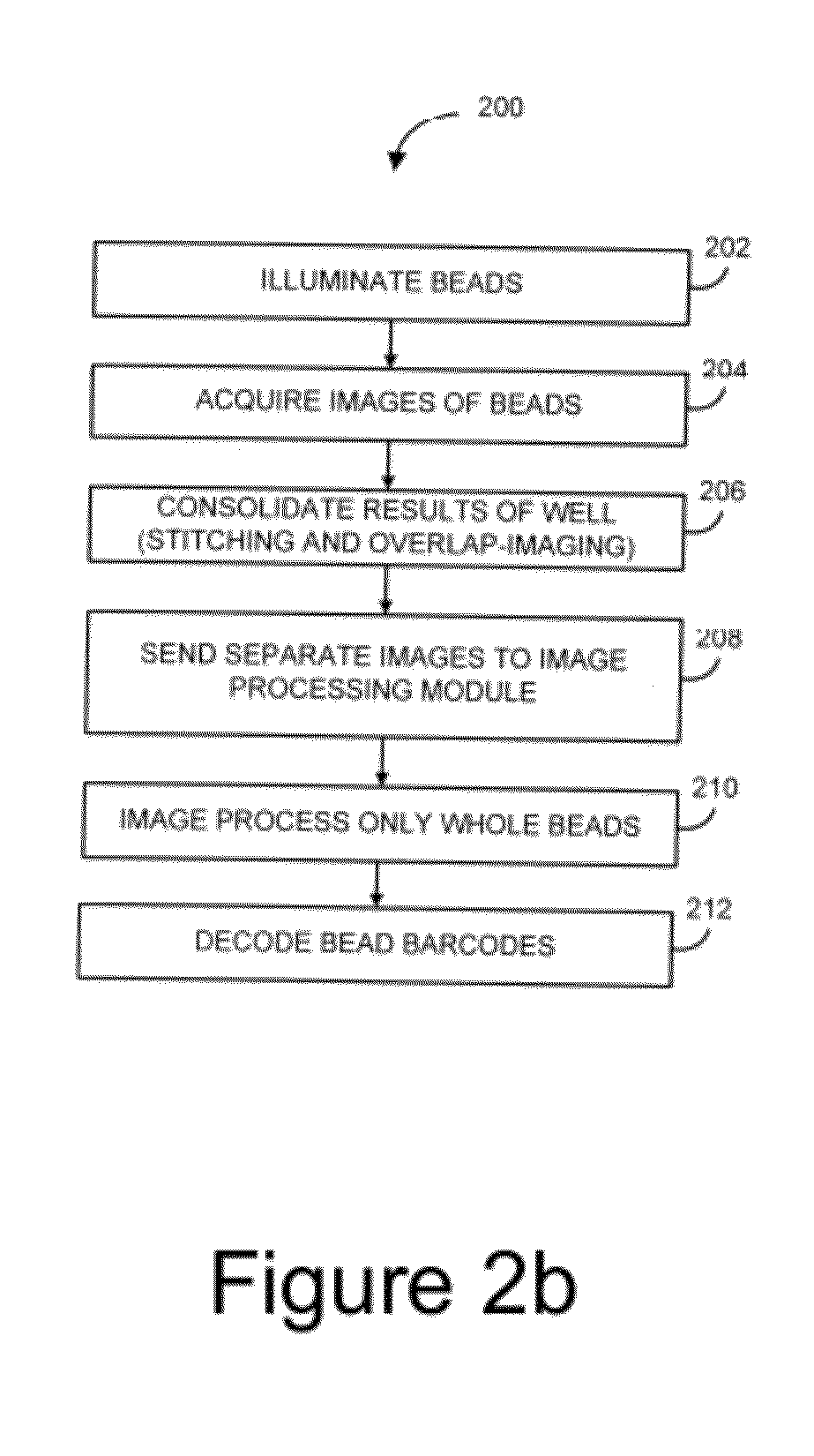Highly multiplexed real-time PCR using encoded microbeads
a encoded microbead technology, applied in the field of high-multiplexed real-time polymerase chain reaction (pcr) assays, can solve the problems of difficult quantitative information, difficult to provide quantitative information, and slow solid phase reaction kinetics, etc., to achieve easy and rapid repeating, high throughput, and minimal difficulty
- Summary
- Abstract
- Description
- Claims
- Application Information
AI Technical Summary
Benefits of technology
Problems solved by technology
Method used
Image
Examples
example 1
Labeled Microbeads—Based Multiplex qPCR with ds DNA-Binding Dye as Reporter
[0194]All real-time PCR systems rely upon the detection and quantitation of a fluorescent reporter, the signal increase is proportionate to the amount of PCR product in a reaction. In the simplest and most economical format, that reporter is the double-strand DNA-specific dye SYBR® Green. SYBR Green binds double-stranded DNA, and upon excitation emits fluorescent light.
[0195]Labeled microbeads—based multiplex qPCR, for target N, the forward primer N, as shown in FIG. 18a, can be coupled to labeled microbeads with specific barcode: N, and leave the reverse primer in aqueous solution (or vice versa), forward primer N can be coupled to one labeled microbeads N. After the denaturing, annealing, extension, and dye-DNA binding processes, PCR product accumulates on the bead and fluorescence on bead increases accordantly. For signal detection, SYBR Green (or other ds DNA-binding dye e.g. Eva Green (Biotium)) are comm...
example 2
Labeled Microbeads—Based Multiplex qPCR / RT-PCR Using Hairpin Primers with Fluorophore
[0219]Hairpin primers consist of a single-stranded loop complementary to the target template and a tail of about 6 nucleotides are added to the 5′ end of the primer to form a blunt-end hairpin when the primer is not incorporated into a PCR product. A fluorophore is added on a base close to the 3′ end with (or without) quencher added at 5′ end. When the probe is in hairpin configuration, the fluorophore and quencher are in close proximity. Upon binding, the stem comes apart and the fluorophore and quencher are separated, giving off fluorescence. These probes are very flexible and can be used for any existing PCR application. FIG. 19 illustrates multiplex real-time PCR / RT-PCR: the major steps for real-time PCR amplification and detection on labeled microbeads. For labeled microbeads—based real-time PCR reaction, the forward hairpin primers, N, are coupled on labeled microbeads with a barcode number N....
example 3
Encoded Microbead-Based Multiplex qPCR / RT-PCR Using Molecular Beacons Probes
[0221]The principle of molecular beacon probe consist of a single-stranded loop complementary to the target template and a double-stranded stem, about six based in lengths, with a fluorophore at one end and a quencher at the other end, very similar to the hairpin primer illustrated in Example 2, but used as a probe molecule. FIG. 20 illustrated multiplex real-time PCR / RT-PCR on labeled microbeads by molecular beacons. The real-time PCR reaction can be performed with molecular beacon probe, N, coupled on labeled microbeads: N. labeled microbeads has abundance of probe molecules. Molecular beacons probes allow multiplex detection of PCR products. The signal will be generated only in the presence of the target, and remaining dark in its absence. The genomic DNA, or the 1st cDNA synthesized by reverse transcriptase will be used for multiplex targets amplification by asymmetric PCR. The primers could be designed ...
PUM
| Property | Measurement | Unit |
|---|---|---|
| length | aaaaa | aaaaa |
| wavelength | aaaaa | aaaaa |
| diameters | aaaaa | aaaaa |
Abstract
Description
Claims
Application Information
 Login to View More
Login to View More - R&D
- Intellectual Property
- Life Sciences
- Materials
- Tech Scout
- Unparalleled Data Quality
- Higher Quality Content
- 60% Fewer Hallucinations
Browse by: Latest US Patents, China's latest patents, Technical Efficacy Thesaurus, Application Domain, Technology Topic, Popular Technical Reports.
© 2025 PatSnap. All rights reserved.Legal|Privacy policy|Modern Slavery Act Transparency Statement|Sitemap|About US| Contact US: help@patsnap.com



